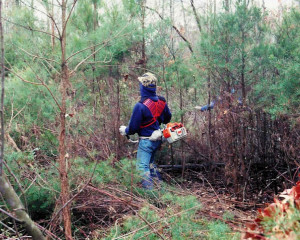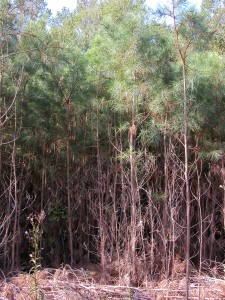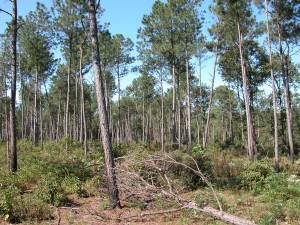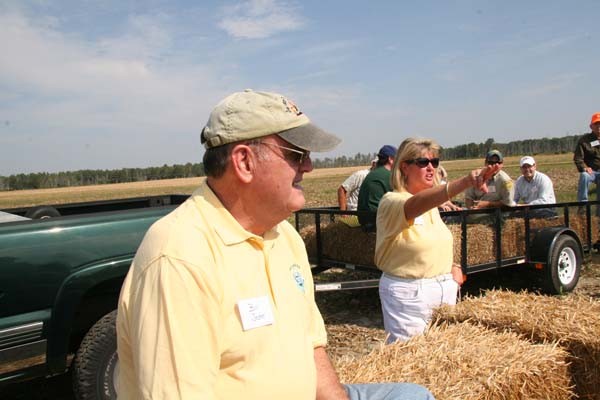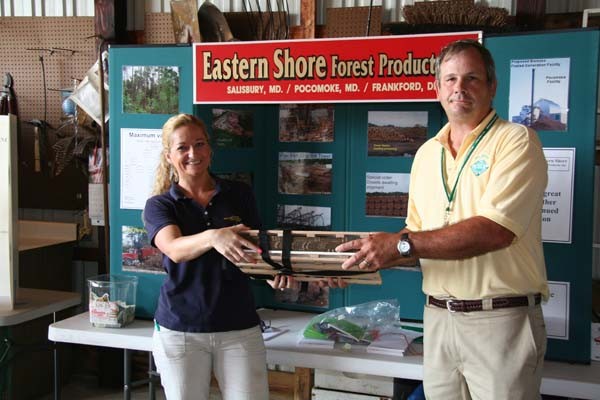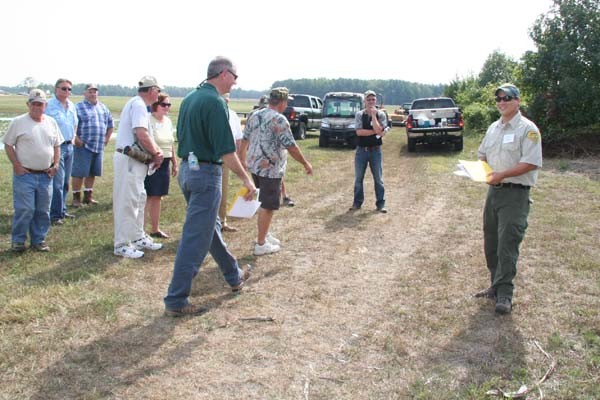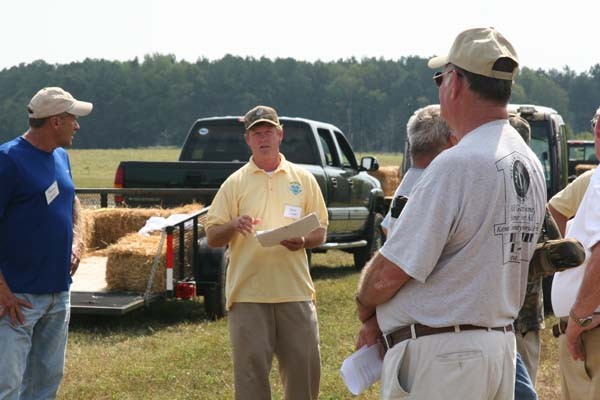The professional service foresters from the Delaware Forest Service would like to offer technical assistance to forest landowners interested in a no-cost evaluation on whether a pre-commercial thinning (PCT) is right for their forestland at the current time. Landowners are encouraged to contact the DFS if they are interested in participating in the next PCT cycle as this program is only offered every few years.If a thinning is recommended, DFS will help evaluate the site, line up a contractor, create contracts, arrange for cost share and supervise the work. All the landowner has to do is sign the contracts and pay the bill. Cost-share reimbursement up to 50 percent is available after project completion.
Please contact: Samual L. Topper, Senior Forester, Delaware Forest Service, (302)856-2893 or by email at: sam.topper@delaware.gov Website: http://de.gov/forestry
Pre-Commercial Thinning
Pre-commercial thinning is the cutting of trees from a young stand so remaining trees will have room to grow to marketable size. Usually, the trees cut in a pre-commercial thinning have no commercial value and normally none of the felled trees are removed for utilization. The primary intent is to improve growth potential for the trees left after thinning. Usually, brush saws are used for a pre-commercial thinning, although sometimes the trees are large enough to warrant using a chainsaw.
Why Bother with a Pre-Commercial Thinning?
Pre-commercial thinning is used to reduce the time to reach a commercial thinning in the stand. By controlling the species composition, growth rate, and form of the trees growing in a stand, merchantable trees may grow three times as quickly. The challenge for many forest landowners is to get the first commercial thinning out of the way, in order to have the growing space distributed over good growing stock and to really start to enjoy the financial benefits of a healthy forest.
Benefits of Pre-Commercial Thinning
A pre-commercial thinning moves the stand to a point where sawlogs can be harvested much more quickly than would happen without thinning. It is possible that the next thinning of that stand will be a commercial one in which the landowner will receive revenues. In the same time that a tree from an overstocked stand would take to reach maturity, a landowner who invests in a PCT will likely enjoy revenues from two or possibly three commercial thinnings.
When is a Stand of Trees Ready for a Pre-Commercial Thinning?
Conifer plantations that have an ingress of natural trees that suppress the growth of the plantation may well benefit from a pre-commercial thinning or “cleaning”. Pre-commercial thinnings are often needed in stands that are naturally regenerated, where thousands of seedlings per acre are established. The goal of a pre-commercial thin is to reduce stocking to 400 to 600 seedlings per acre. There is no merchantable material removed during the first thinning; thus, it occurs at an expense.
However, the removal of the excess seedlings will prevent tree stagnation and improve stand growth and development. To minimize cost, pre-commercial thinnings should be conducted before the stand is 4 years old. Mowing strips across the stand, leaving seedlings in 1- to 2-foot-wide rows, will quickly reduce the total number of seedlings. Row width is dependent upon seedling density.

